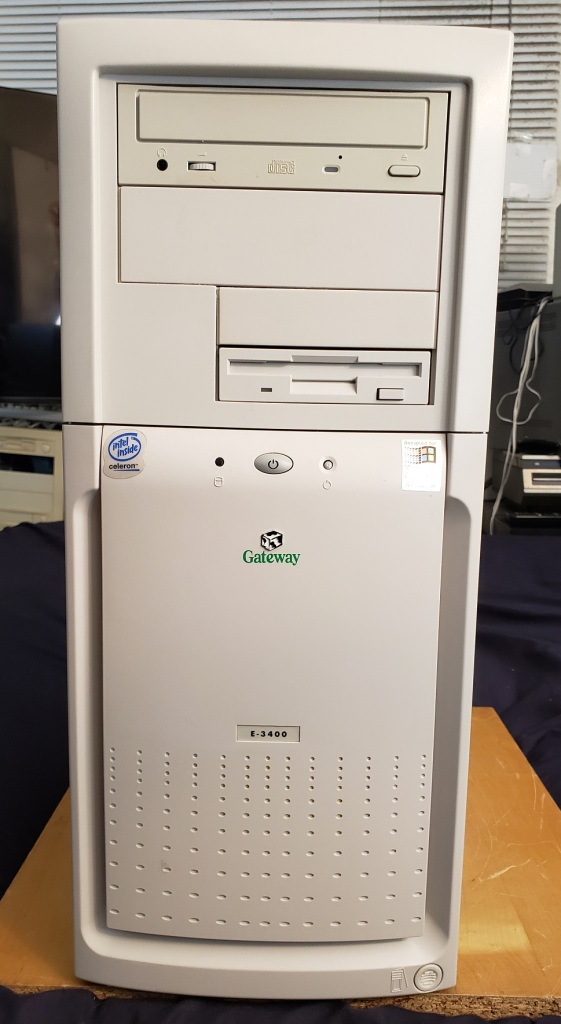
I picked up this beige Gateway E-3400 at the same time as my Dell Dimension XPS T700r that I covered in a previous article. Looking at the case it seems like a pretty standard beige box from the late 90s though when we turn it around we will see it’s a little bit different. There are two 5.25 and two 3.5-inch bays in this mid-tower which although is more than enough for most users is a little lacking compared to other full tower cases which have three or four 5.25-inch bays. Mid case we have a power (that lights up) and reset button along with an HDD activity light. On the very bottom right we have a button you press when removing the side of the case.

Looking at the rear of the case we can see it looks a little nonstandard. This is due to the motherboard form factor which we will take a look at in a moment but my first reaction was that this was some kind of server or workstation type PC. Near the top of the case we have a strange open slot, this is actually a slot for the AGP video card which we will look at after looking inside the case. To the right of the opening we have various I/O ports starting with a printer port and a standard VGA port which on my machine was covered up with a cap. Next we have dual serial ports followed by PS/2 ports for both keyboard and mouse. Lastly, we have dual USB ports (most likely USB 1.x as the user manual dated March 8, 2000 does not specify) and some audio jacks for line out, microphone, and line in. At the bottom of the case we have five expansion slots and at the very bottom of the case we have our power supply. Having the power supply at the bottom of a PC tower case as opposed to the top was fairly uncommon in the 1990s and early 2000s.
Taking off the side of the case on the E-3400 also removes the top of the case.
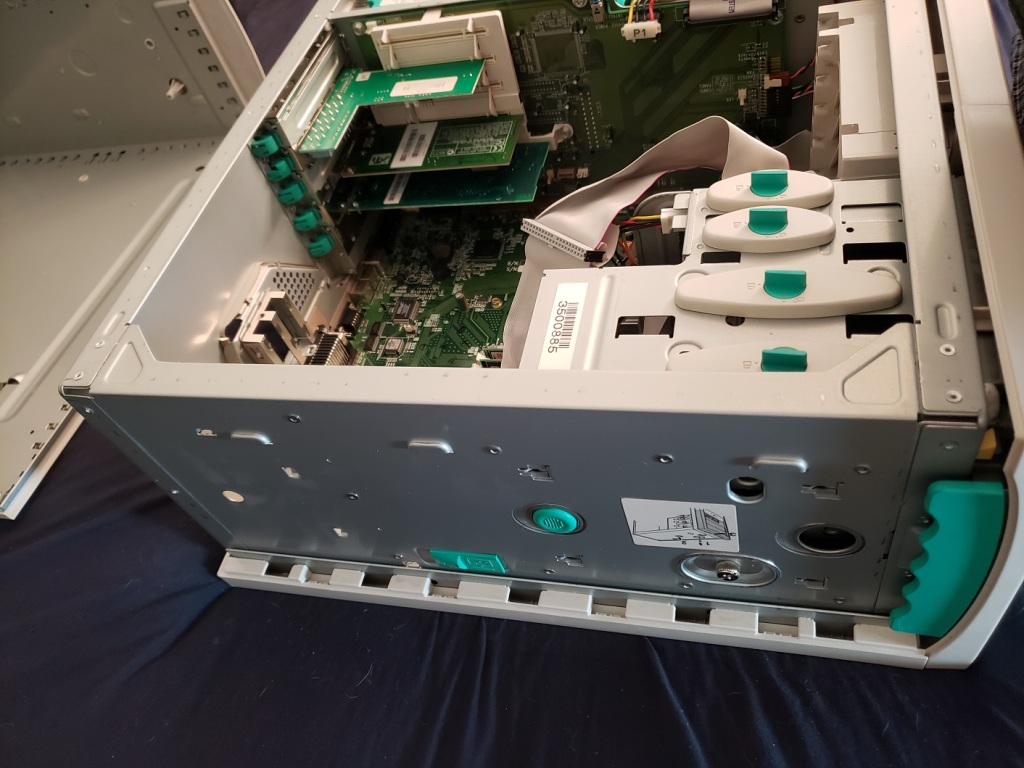

With the case open we can see the E-3400 uses the NLX motherboard form factor which is a motherboard form factor that some OEMs like IBM and Gateway used in some PCs in the mostly late 90s and early 2000s. I also covered my IBM 300PL Type 6862 which also used this motherboard form factor. Other than the form factor this is a pretty standard socket PGA370 board using the Intel i815 chipset. The most immediately noticeable difference are the PCI slots being located on the daughterboard and the AGP slot being completely separate from the other expansion slots.
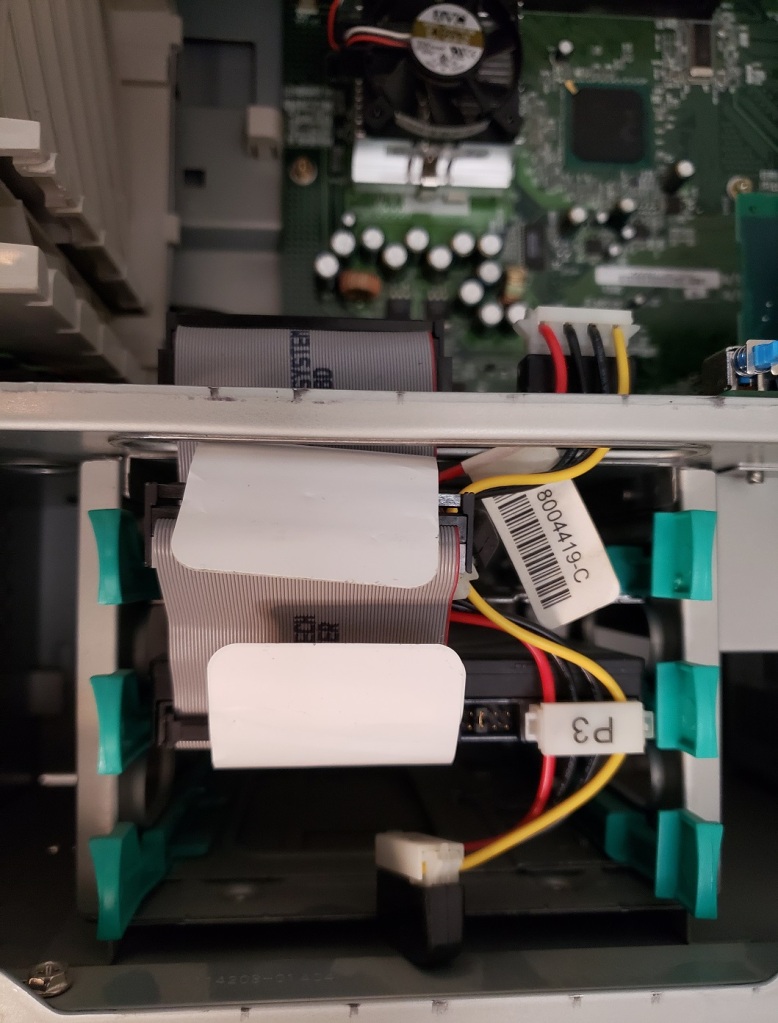
On the bottom of the case across from the power supply are three bays for housing hard drives via guide rails. My E-3400 came with two 40GB hard drives.
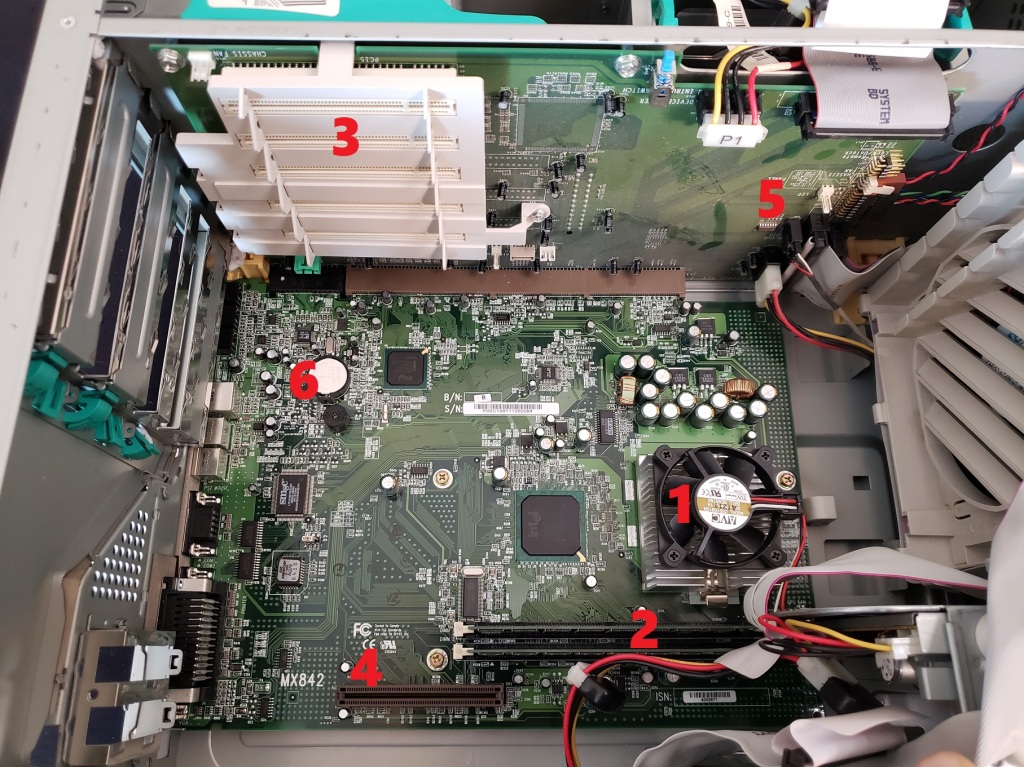
1) CPU – My E-3400 came equipped with an 800MHz Celeron CPU running on a 100MHz FSB. I decided to upgrade this to an 800MHz Pentium III running on a 133MHz FSB as a nice little speed bump. The E-3400 should be able to handle all Coppermine Celeron and non-Tualatin Pentium III CPUs up to 1.13GHz
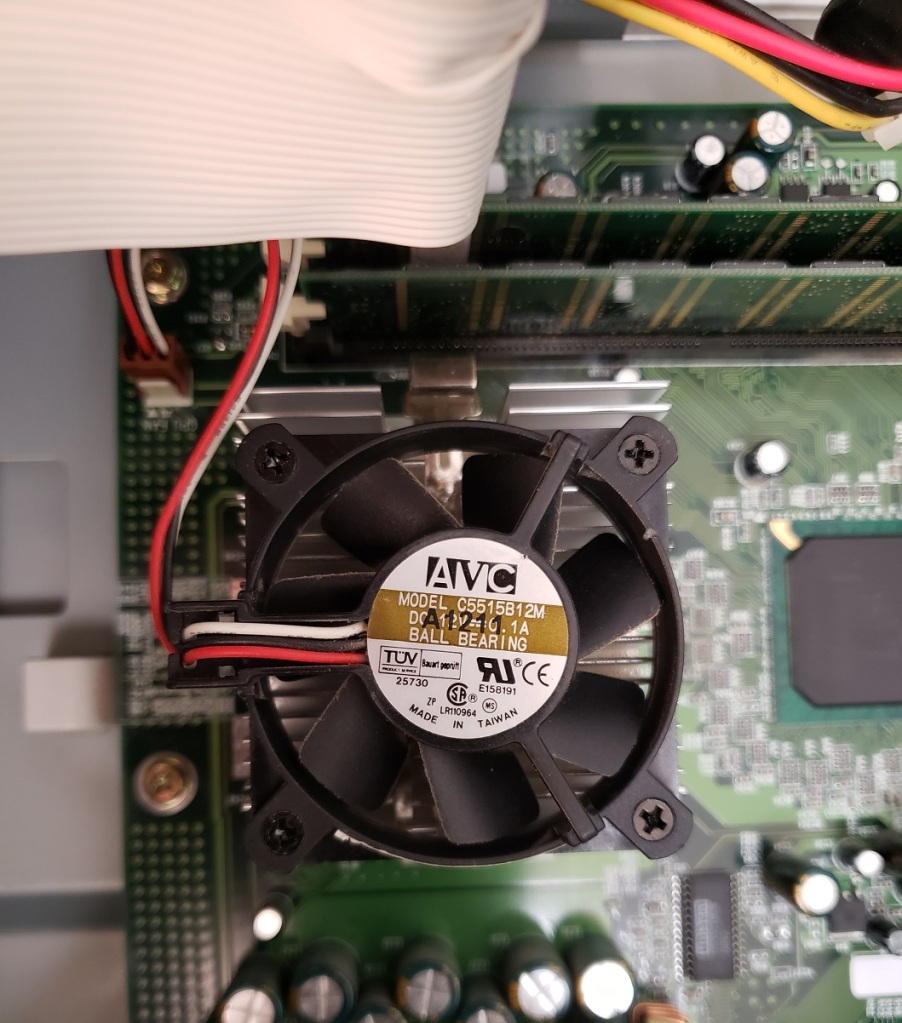
2) RAM – With only two slots for memory expansion the E-3400 is only capable of supporting up to 512MB of SDRAM, at least according to the manual. This is fine if you’re planning to run Windows 9x or even early XP titles though it may become a hindrance if you wanted to make your PC into a more capable Windows XP gaming machine where you may want at least a gig of memory.
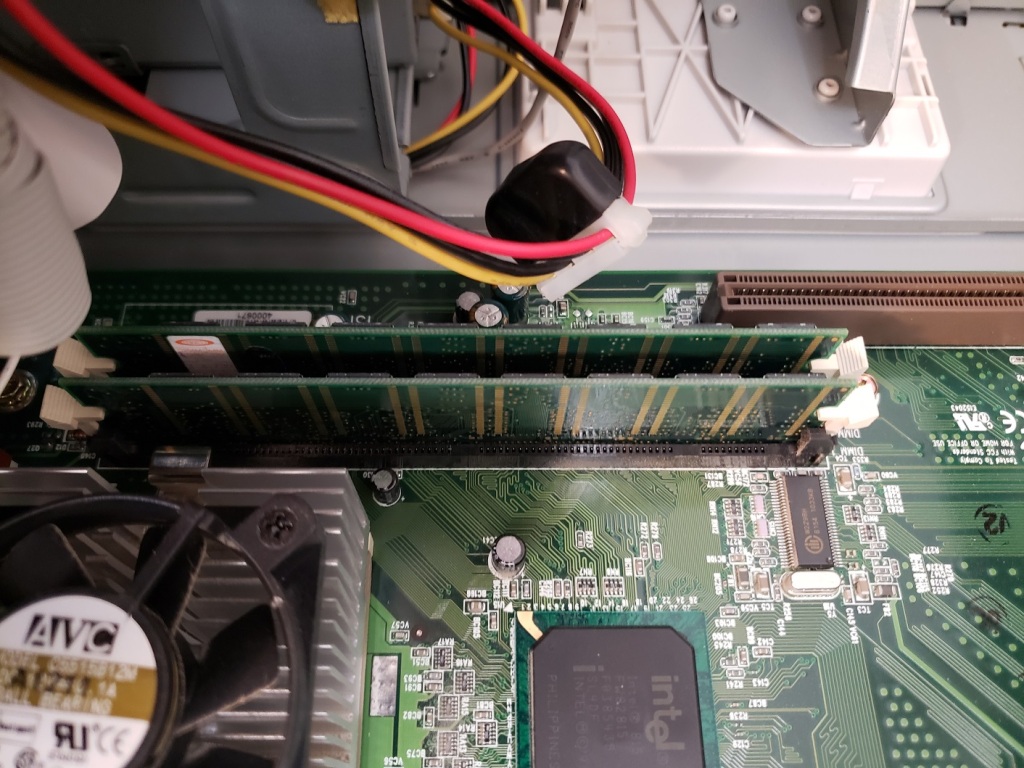
3) Expansion slots – For expansion slots on the daughterboard we have five PCI slots. On the E-3400 there is also a neat little plastic guard that goes over all the slots, it really doesn’t do much but it does look neat. It would have been nice to have a 16-bit ISA slot or two if for DOS but seeing as this is a Pentium III class motherboard the vast amount of users that plan to use this PC for retro gaming are likely looking to build out a Windows 9x or XP machine.
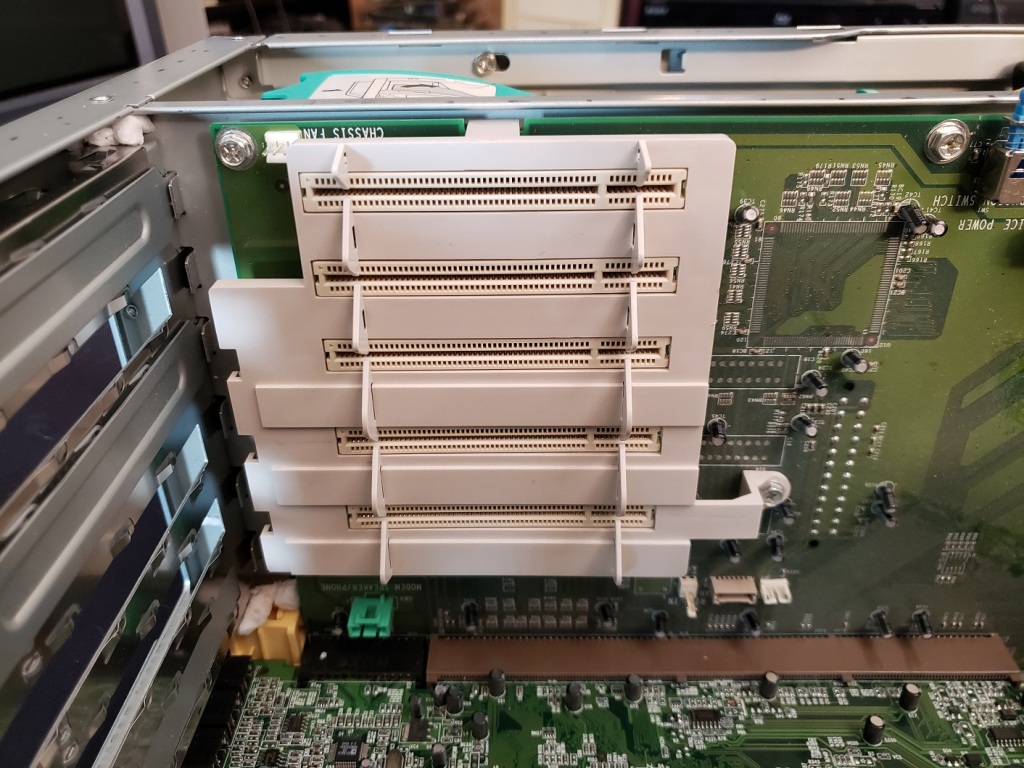
4) AGP slot – The AGP x4 slot, unlike on most motherboards is located away from the other expansion slots. Because of the form factor you will need an NLX video card and a special NLX style bracket. Fortunately Diamond Multimedia made a large number of video cards with various different graphics chips in the late 90s that comply with the NLX standard.

5) Daughterboard – Other than the PCI slots the second half of the NLX motherboard also houses the floppy and IDE connectors with Ultra DMA/66 support as well as some power connectors and connectors to the front buttons and LED lights

6) CMOS battery and a piezo speaker.

Expansion cards
The first expansion card is an Ethernet card, I believe the one pictured is a 3Com Tornado LAN card which I also believe came standard with this PC.
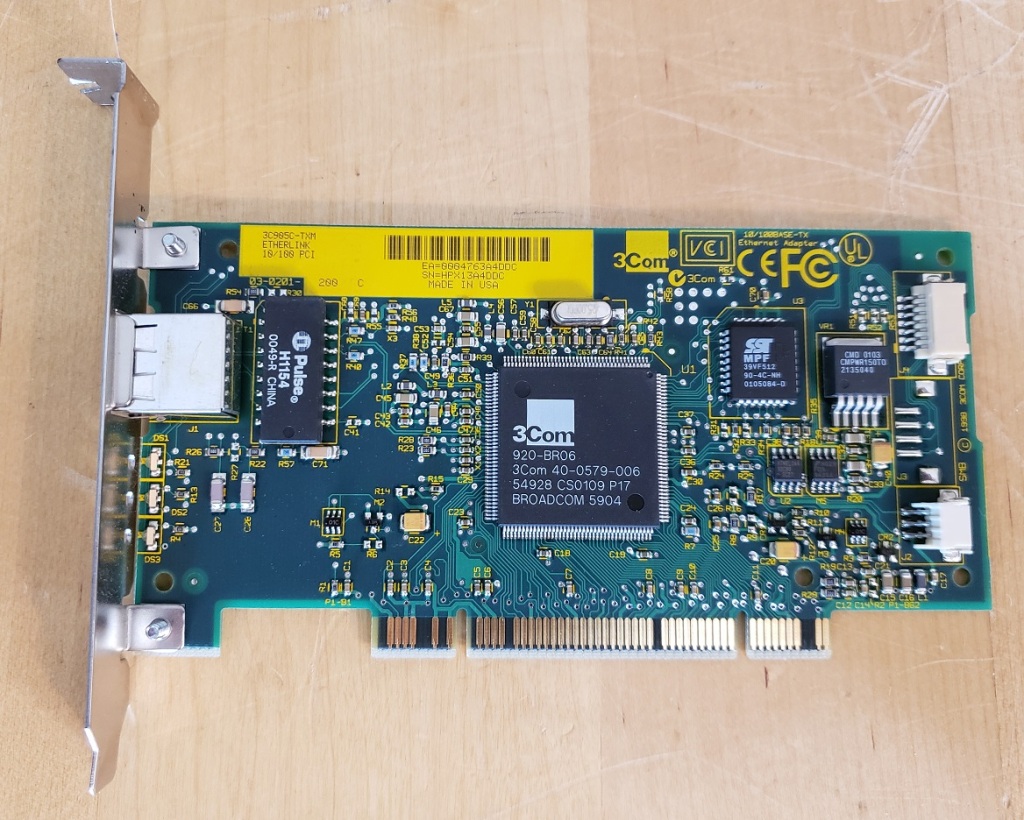
Sound
Looking my motherboard over I could not seem to locate an obvious sound chip for the built-in audio (a reader did comment that the sound chip should be the chip located between the audio jacks and the CMOS battery) but the user manual indicates the sound is Integrated audio using a AC’97 compliant audio Codec chip.
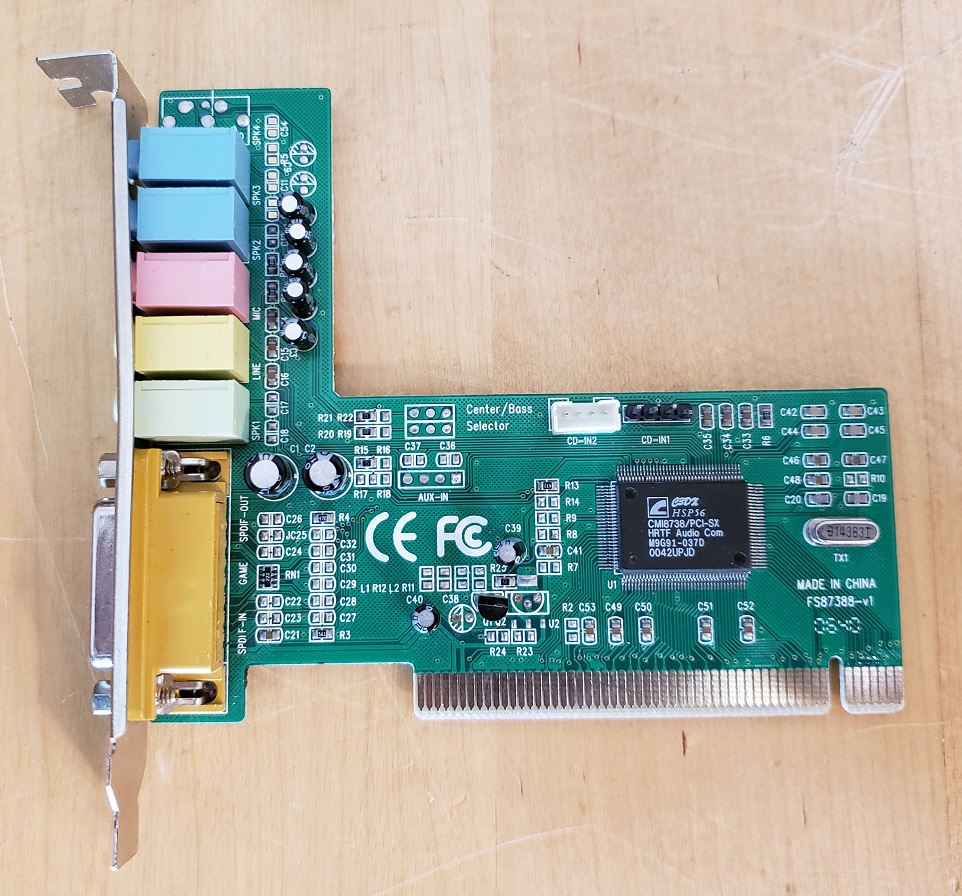
My PC did however come with a discreet PCI sound card powered by the CMI8738 chip. Nothing very fancy but perhaps better than the built-in audio. The sound chip seems to have decent adlib/FM support but spotty Sound Blaster DOS support as well as EAX support in Windows though it doesn’t sound as high quality as a true EAX card from Creative. You do get a joystick/controller port with the card which is a bonus.
Video
Some E-3400s according to the manual do have integrated video though some like mine came with a discreet ATI Rage video card.
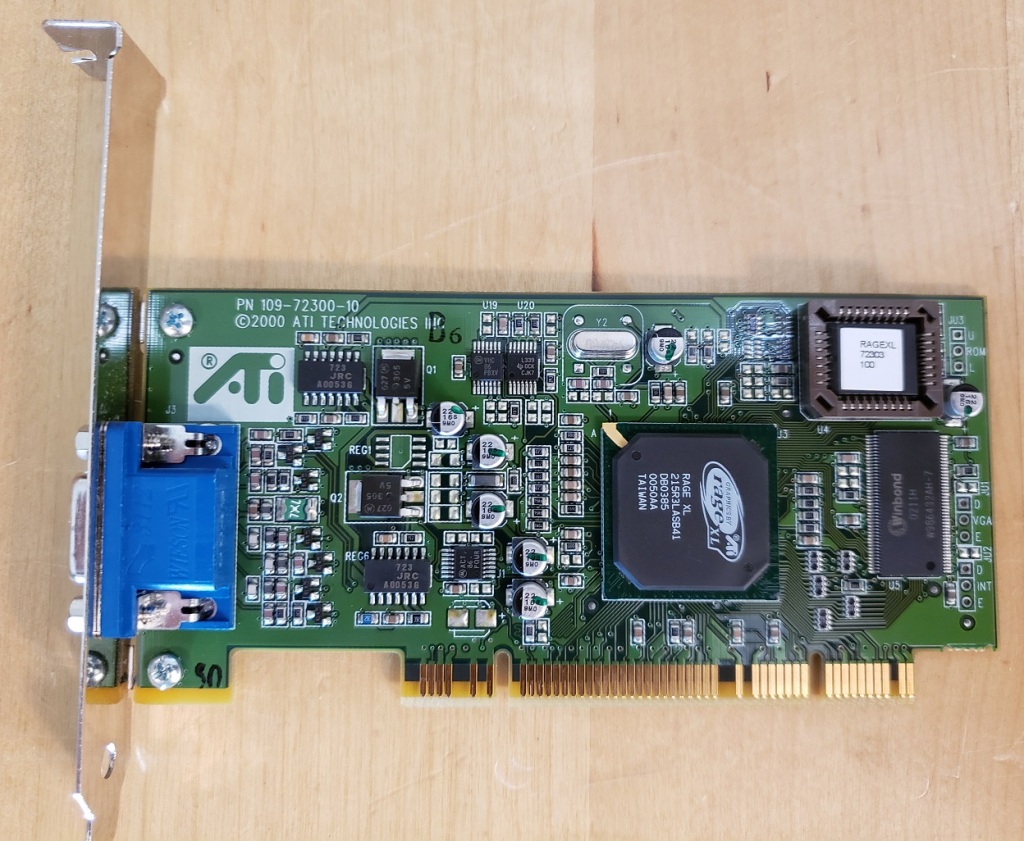
My PC came with an ATI Rage XL based card in the PCI variety as opposed to an AGP card. The Rage XL could be considered the pinnacle of the original Rage line of video cards and was widely used as a low cost video card in servers and workstations into the early 2000s. The card actually performs surprisingly well in games and I was honestly impressed with its performance. I found games like the original Quake under DOS as well as Forsaken under Windows 9x ran quite well and looked good. Games from around 2000 such as Quake III did not perform so well though and you should turn down settings if you want better performance. In theory the Rage XL should be the best card for playing ATIs proprietary API CIF on though unfortunately this is not possible mainly due to the newer drivers which are not compatible with CIF supporting games that the XL card requires.
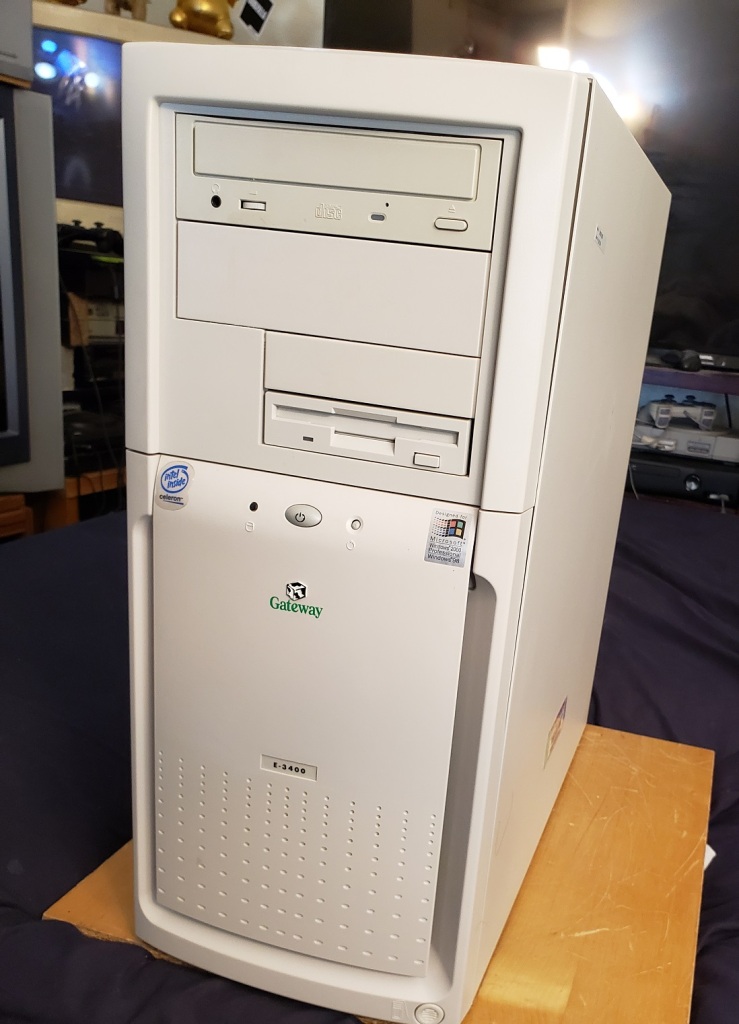
There’s nothing wrong with the Gateway E-3400 and with some effort it can be turned into a good Windows 9x or early XP gaming PC but I didn’t find it quite worth the effort. The strange form factor doesn’t really hurt this PC but it does limit you a little on what AGP cards you can use. The limit of 512MB of RAM can also be a hindrance if you want to build a more powerful XP gaming PC. I also had some issues with the side of the case fitting correctly and the plastic tabs on my PC broke fairly easily. There are just better and more convenient options out there for retro gamers than the E-3400. If it’s all you have go ahead and pimp it out but if you have other options just go with those.